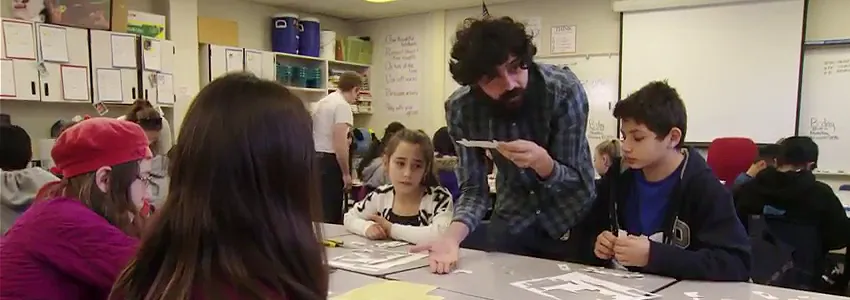
Screenshot from video of Dr. Manu Prakash teaching students how to use the Foldscope.
Stanford Medicine Scope - July 6th, 2016 - by Holly MacCormick
Stanford bioengineer Manu Prakash, PhD, is a man on a mission. “I have a very simple vision of every one single kid in the world carrying around a microscope in their pocket,” he said. “To me it’s like the pencil of microscopy. Pencils are everywhere, so should be microscopes.” In this Gordon and Betty Moore Foundation video, Manu shares how he made this vision a reality.
Microscopes are often expensive and bulky, he explained, and not exactly the kind of thing a child could carry on an outdoor adventure. So, Manu and his lab turned to one of the most kid-friendly and inexpensive objects there is: Paper.
“The reason it’s made out of a flat sheet of paper is not just the fact that paper is a cheap material, but paper has a phenomenal property that if you fold it properly in a given set of instructions it gives rise to precision,” he said. “You can align optics that are important for a microscope to work in ways that would generally require a lot more resources.”
The finished product is called a Foldscope. It costs less than $1 to make and can magnify contents to more than 2,000x. This is the maximum magnification of a compound light microscope, and with it you can see bacteria, protozoa and many human and animal cells.
Children and adults in more than 130 countries are now using the Foldscope to examine the world around them and to conduct research in places where traditional microscopes can’t go.
“It was very crucial to build a tool that you literally could use all the time [and] not worry about whether you’re going to break it or not,” Manu explained. “What you want to do is the most important thing not the tool.”

